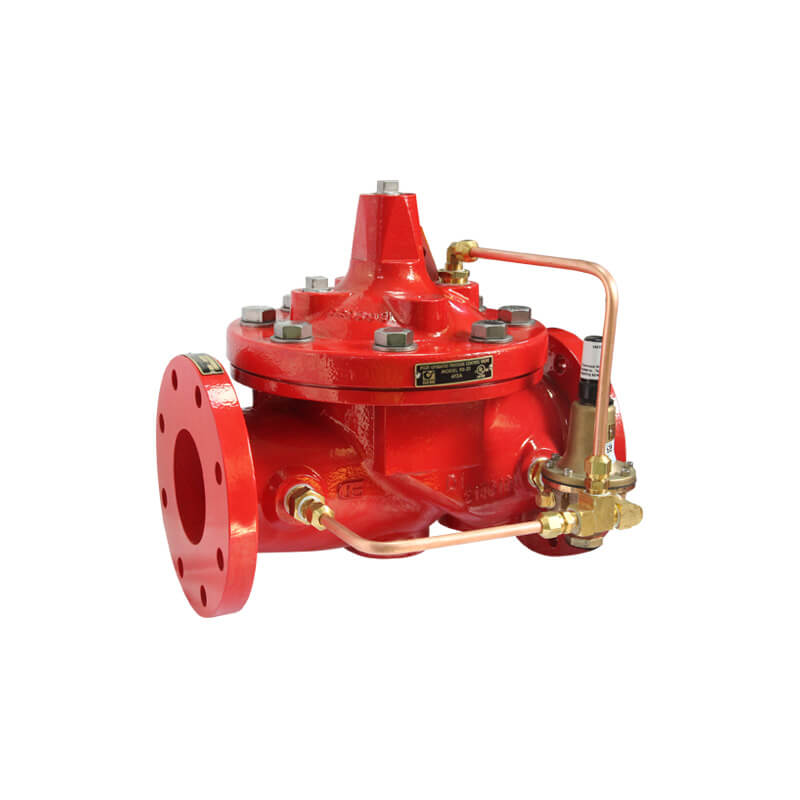ressure regulator valves, while all serving the fundamental purpose of controlling fluid pressure, come in various types and designs, each suited for different applications and performance requirements. They can be broadly categorized by their operating mechanism, construction, and specific function.

Here are the main types of pressure regulator valves:
Table of Contents
ToggleI. Based on Operating Mechanism:
This is the most fundamental distinction, referring to how the valve’s main control element is actuated.
- Direct-Acting Pressure Regulators:
- How they work: These are the simplest and most common type (like the ones we discussed for residential water pressure). The downstream pressure directly acts upon a flexible diaphragm or a piston, which then directly opposes the force of an adjustment spring.
- Characteristics:
- Simpler design: Fewer moving parts.
- Cost-effective: Generally less expensive.
- Good for smaller flows: Adequate for many domestic and light industrial applications.
- Accuracy: Moderate accuracy, can experience “droop” (downstream pressure drops slightly as flow increases).
- Applications: Residential water pressure regulation, compressed air lines for pneumatic tools, small gas lines.
- Pilot-Operated Pressure Regulators:
- How they work: These are more complex. They use a small, internal “pilot” valve (which itself is a small direct-acting regulator) to control the movement of a much larger “main” valve. The pilot valve senses the downstream pressure and directs a small flow of the fluid (or an external fluid) to open or close the main valve’s diaphragm or piston.
- Characteristics:
- Higher accuracy: Can maintain a more stable downstream pressure over a wider range of flow rates.
- Larger flow capacities: Suitable for large pipelines and industrial processes.
- Faster response: Can react more quickly to sudden changes in upstream pressure or flow demand.
- More complex design: More expensive and potentially more maintenance.
- Applications: Industrial processes, large commercial buildings, utility gas pipelines, steam distribution systems.
II. Based on Construction/Sensing Element:
This refers to the physical component that senses the pressure and translates it into a mechanical movement.
- Diaphragm Type Regulators:
- How they work: Utilize a thin, flexible diaphragm (often made of rubber or metal) to sense changes in downstream pressure. The large surface area of the diaphragm makes it very sensitive to small pressure changes.
- Characteristics:
- High sensitivity and accuracy: Ideal for precise pressure control.
- Suitable for lower to moderate pressures: Diaphragms can deform under very high pressures.
- Best for clean fluids: Particulates can damage the diaphragm.
- Applications: Water pressure regulation, natural gas lines, sensitive pneumatic control.
- Piston Type Regulators:
- How they work: Employ a solid, movable piston to sense pressure. The piston slides within a cylinder.
- Characteristics:
- Rugged and durable: Can withstand higher pressures and rougher service conditions.
- Less sensitive: Requires larger pressure changes to initiate movement compared to diaphragms.
- Good for dirtier fluids: Less prone to damage from particulates.
- Applications: High-pressure gas cylinders, hydraulic systems, industrial air lines where robustness is key.
III. Based on Specific Function/Application:
While most regulators are “pressure reducing,” there are other specialized functions.
- Pressure Reducing Regulators (Standard PRV):
- Function: Reduces a higher, fluctuating upstream pressure to a lower, stable downstream pressure (the most common type we’ve been discussing).
- Applications: Homes, factories, irrigation systems, pneumatic tools.
- Backpressure Regulators (BPR):
- Function: Maintains a constant upstream pressure by relieving excess fluid downstream. It opens when upstream pressure exceeds a setpoint. Essentially, it acts as a pressure relief valve that modulates flow to maintain pressure, rather than just pop open.
- Applications: Maintaining pressure in a reaction vessel, protecting pumps from overpressure, controlling flow rates by maintaining a constant upstream pressure to an orifice.
- Differential Pressure Regulators:
- Function: Maintains a constant difference in pressure between two points in a system, rather than a fixed pressure relative to atmospheric pressure.
- Applications: HVAC systems, flow control applications where maintaining a specific pressure drop across an orifice is crucial.
- Specialized Service Regulators:
- While their internal mechanism might be direct-acting or pilot-operated, they are specifically designed and certified for particular fluid types:
- Water Pressure Regulators: Designed for potable water.
- Gas Pressure Regulators: Specifically for natural gas, propane, oxygen, acetylene, etc., with appropriate materials and safety features.
- Steam Pressure Regulators: Built to withstand high temperatures and pressures of steam.
- Air Pressure Regulators: For compressed air systems.
- While their internal mechanism might be direct-acting or pilot-operated, they are specifically designed and certified for particular fluid types:
Understanding these different types helps in selecting the most appropriate pressure regulator valve for a given application, ensuring safety, efficiency, and optimal performance of the fluid system.
